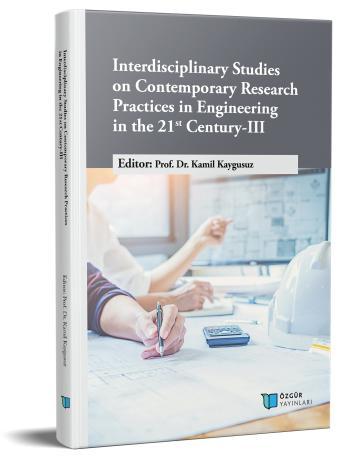
Evrişimsel Sinir Ağları Kullanılarak Zararlı Bitkilerin Lokal Olarak İlaçlanması için Tarımsal Bir İnsansız Kara Aracı
Şu kitabın bölümü:
Kaygusuz,
K.
(ed.)
2023.
21. Yüzyılda Mühendislikte Çağdaş Araştırma Uygulamaları Üzerine Disiplinler Arası Çalışmalar III.
Özet
Tarımda yapay zekâ destekli insansız kara araçlarının tercih edilmesiyle aşırı kimyasal kullanımı ve çevre kirliliği ciddi oranda azaltılabilir. Tüm arazinin ilaçlanması yerine tarımsal insansız kara araçlarıyla lokal müdahalelerde bulunulabilir. İstenmeyen zararlı bitkiler lokal ilaçlama yapılarak ortadan kaldırılabilir. Aynı zamanda karadan yapılan ilaçlamalarda havadan yapılan ilaçlamalara kıyasla ilaç havada dağılmayacağından daha etkili ve sağlıklı sonuçlar alınabilir. Böylece zararlı kimyasalların tarım arazilerine etkileri en aza indirgenir, daha verimli ilaçlama yapılır ve kullanılan ilaç miktarı düşeceğinden maliyet azalır. Bu çalışmada tarım arazilerindeki zararlı bitkilerin lokal olarak ilaçlanabilmesi için özgün tasarıma sahip otonom bir tarımsal kara aracı geliştirilmiştir. Araç doğadan esinlenerek tasarlanmış ve hafiflik için üretiminde alüminyum profiller tercih edilmiştir. Aracın tarım arazilerindeki hareketini kolaylaştırmak için yenilikçi bir süspansiyon sistemi geliştirilmiştir. Bu sistemle bozuk zemin etkilerini en aza indirmek hedeflenmiştir. Araca yerleştirilen derinlik kamerasından alınan verilerle robot işletim sistemi üzerinden eş zamanlı yol haritası oluşturulmaktadır. Tarım arazisindeki zararlı bitkilerin tespit edilebilmesi için evrişimsel sinir ağları temelli bir tespit algoritması kullanılmıştır. Zararlı bitkinin tespit edildiği anda ilaçlanması önemlidir. Aksi halde yanlış ya da verimsiz ilaçlama yapılmış olur. Kullanılan tespit algoritmasıyla bu darboğazın üstesinden gelinmiş ve gerçek zamanda en az gecikmeyle otonom ilaçlama sağlanmıştır. Geliştirilen kara aracıyla yapılan saha testlerinde 40 cm yüksekten %90 doğrulukla tarım arazisindeki zararlı bitki tespit edilip anlık olarak başarılı bir şekilde ilaçlanmıştır. İlaçlama süresince aracın konumu, pil tüketimi ve ilaç durumu gibi kritik parametreler harici bir yer istasyonu üzerinden geliştirilen kontrol ve takip arayüzüyle eş zamanlı izlenmektedir. Aracın güç besleme bileşenleri aracın düz bir arazide 1.5 – 2 saat süresince görev yapılabileceği şekilde seçilmiştir. Bunun yanında araca yerleştirilen güneş pilleriyle aracın görev süresinin uzatılması amaçlanmıştır.

